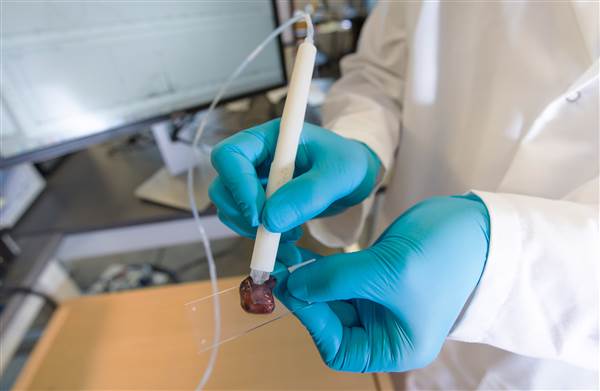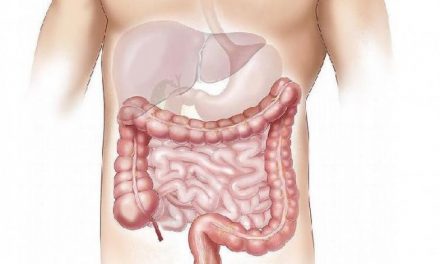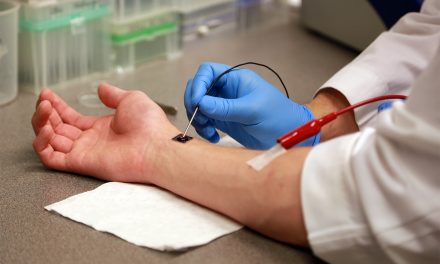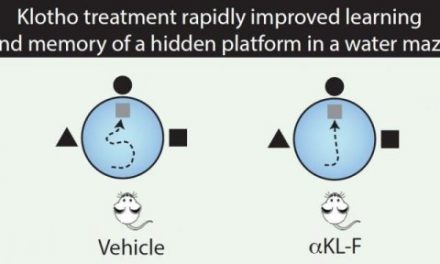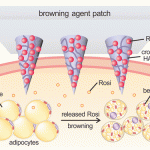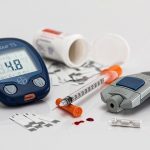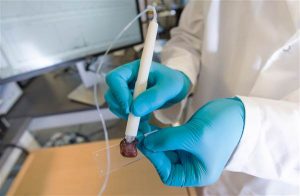
Credit: Vivian Abagiu / Univ. of Texas at Austin
Researchers at the University of Texas say they have invented a handheld tool that can identify cancerous tissue in 10 seconds during a surgical procedure. The team at the University of Texas at Austin published in Science Translational Medicine say the “MasSpec Pen” works in real time, and is at least as accurate as removing a tissue sample and sending it to a pathologist and speeds the testing process by as much as 150 times. The way it works is based on the notion that each type of cancer has its own molecular structure that acts as a distinct “fingerprint.” Cancer cells have a unique metabolism because their accelerated drive to grow and spread so their internal chemistry is very different to that of healthy tissue.
When the “MasSpec Pen” probes suspicious tissue, a drop of water is released. Chemical molecules inside the living cells of the biopsy are absorbed into the droplet, which is then drawn back up the pen for analysis. The “MasSpec Pen” is plugged into a mass spectrometer, that can analyze and measure the mass of thousands of chemical molecules every second. It produces a chemical fingerprint readout that tells doctors whether they are looking at healthy tissue or a specific kind of cancer. The study’s abstract said tests taken from 253 human cancer patients were shown to be accurate 96 percent of the time. So far the pen can detect lung, thyroid, ovary and breast cancer tumors.
“If you talk to cancer patients after surgery, one of the first things many will say is ‘I hope the surgeon got all the cancer out,’ ” said Livia Schiavinato Eberlin, an assistant professor of chemistry at UT Austin who designed the study and led the team.
The “MasSpec Pen” will need a lot more testing before it can be safely used commercially, but it could address a big challenge for surgeons during a cancer removal surgery. Which is to test the remaining tissue after a tumor is removed to see if it’s healthy.James Suliburk, head of endocrine surgery at Baylor College of Medicine and a collaborator on the project commented: “Any time we can offer the patient a more precise surgery, a quicker surgery or a safer surgery, that’s something we want to do.”
“This technology does all three. It allows us to be much more precise in what tissue we remove and what we leave behind.”
The scientists behind the pen technology have filed U.S. patent applications.

